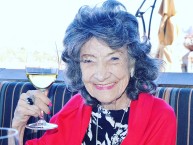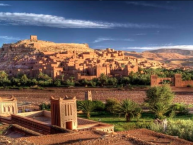THE BUZZ… Wow! It’s hot out there! We’re having a heatwave here in New York. This is when it is a challenge being a woman in Harlem. I feel like throwing on shorts and a tank top – but I would not get a few steps without a “hey baby.”
Yesterday, I participated in The Abyssinian Bicentennial Walk “Retracing Our Steps.” I had second thoughts about going when I heard about the extreme weather, but I had to be a part of living history. The 11-mile walk revisited all the previous locations of The Abyssinian Baptist Church during its 200 year history, with history-making plaque unveiling ceremonies at each site. Let me share a bit of what I learned from Reverend Butts and the Archive Committee…
In 1800, New York had a population of 60,515. There were 6,382 African Americans and more than half of them were slaves. In 1808, under the pastorate of Rev. Thomas Paul, Abyssinian began worshiping at the church’s first location at 40 Worth (Anthony) Street in Lower Manhatten. It was on the edge of the Five Points area of poor whites and blacks. Slavery was finally abolished in New York in 1827.
The Worth Street building was sold in 1854 to pay debts. Abyssinian worshipers rented spaces in the Broadway/Thompson Street area for nine years. In 1863, under the pastorate of Rev. William Spellman, Abyssinian purchased the church’s second location in Greenwich Village at 166 Waverly Place. At that point, the population was over 515,547, with 13,815 African Americans. 5,000 African Americans lived in four Greenwich Village Wards called “Little Africa.” Post-civil war migration of African Americans from the south and Caribbean led to an increase in Abyssinian membership.
By 1898, New York City had consolidated into 5 Boroughs. The African American population moved northward in Manhattan. By 1900, the New York population was 1,855,034 with 36,246 African Americans. In 1903, under the pastorate of Rev. Charles Satchell Morris, Abyssinian purchased the third location of the church in Midtown at 140-46 West 40th Street. In 1908, Rev. Adam Clayton Powell became pastor and began preaching about his dream of “a model church” in Harlem.
Larger numbers of African Americans moved to Harlem after the 1904 opening of the Lenox Avenue subway line. By 1910, the Manhattan population was 2,331,537 with 60,525 African Americans. In the Spring of 1920, the lots for the current location of the church at 132 Odell Clark Place (West 138th Street) in Harlem were purchased. There were tent meetings held on the site until the church opened in May 1923. This year, in 2008, Abyssinian Baptist Church is celebrating its 200th year anniversary under the leadership of Rev. Calvin O. Butts, III.
Making this walk and learning this history made me think about my own life. First, I am so grateful for the ability to walk and for each and every step. I remember when I had an injury to my spine about 8 years ago and I couldn’t walk at all for six months.
Then, I think about destiny. If I was born a century earlier I might have been one of those slaves listed on the books. So, I thank God for this life in this very moment. It might be hot outside, but that does not compare to the daily oppression my ancestors had to endure. I’ll take the cat calls walking down the street because at least it’s not a human cattle call.
Finally, I am grateful for community. It was very special to walk with such committed people of faith. I was walking with my colleague and friend from the American Heart Association, Sherri Holman. Reverend Butts and Mrs. Butts were both out there the entire time leading the march. The idea for the walk came from Mrs. Butts – a woman of great vision. I am always honored to be in her presence.
Ask yourself: How am I living history? What legacy am I leaving? This experience makes me want to live a better life – not in what I acquire, but in who I inspire. I feel that it is an honor to simply be here and a responsibility to make my ancestors proud. What do you think? As John F. Kennedy said:
As we express our gratitude, we must never forget that the highest appreciation is not to utter words, but to live by them.
With Purpose & Power,
Terri






